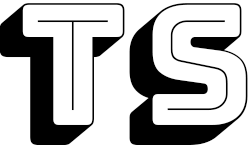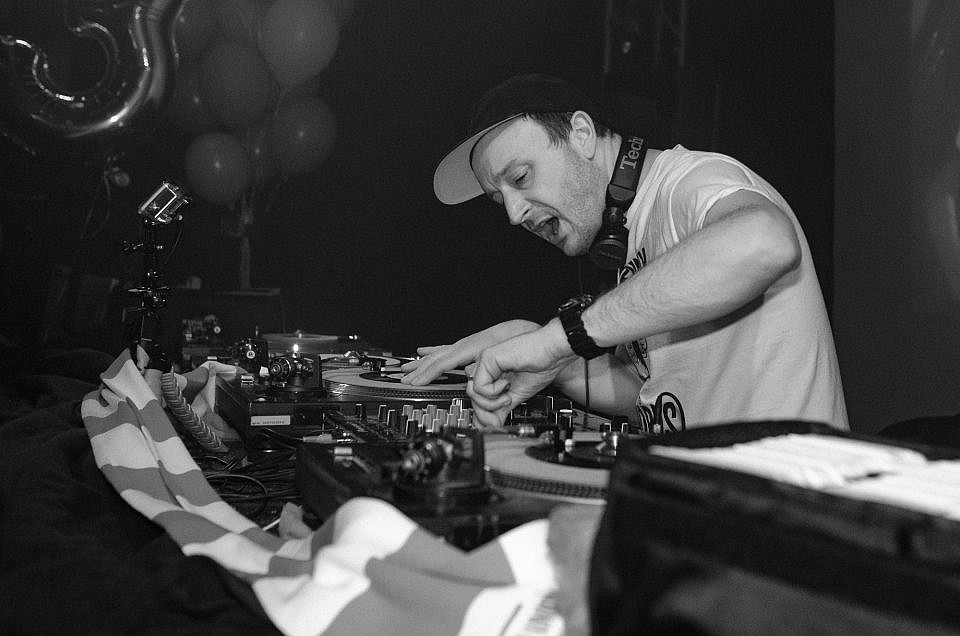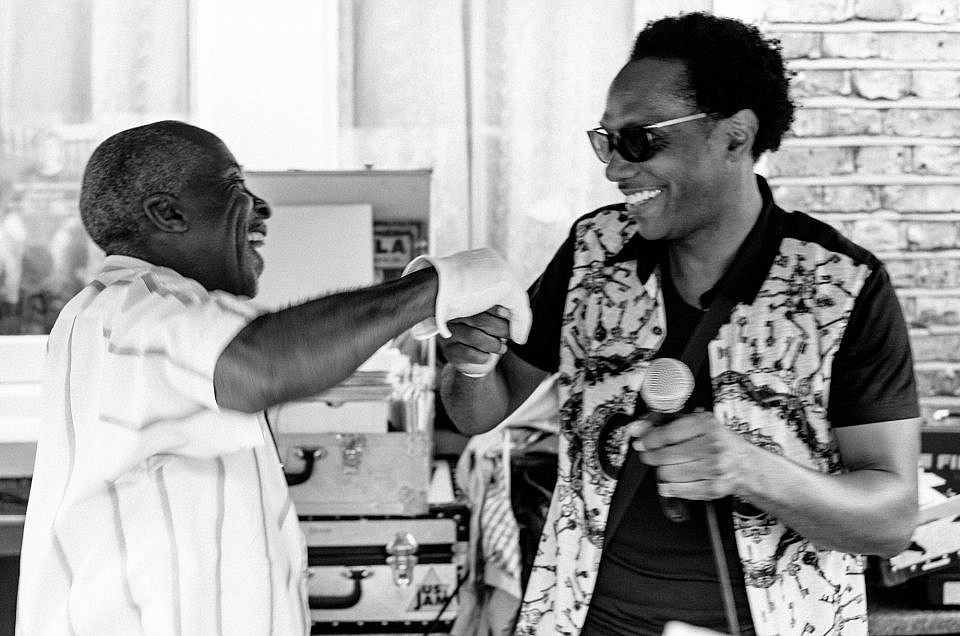Today’s interview is with Al Fingers who was involved in a lot more things that I know than I knew of. Makes me feel a little ignorant but what can you do… Hip hop fans may remember Fat Boss Magazine. If it was a good month, my local record shop used to stock one or two copies of that and it used to be my favourite hip hop magazine. The shop is long gone now and so is the magazine. Al produced it. Then there’s this big, beautiful book about Disruptive Pattern Material released by Hardy Blechman’s Maharishi label. Al Fingers wrote this. So instead of embarrassing myself any further, I steered our conversation to something I know at least a little something about.
Greensleeves Records was founded by Chris Cracknell and Chris Sedgwick in 1977 and eventually became one of the most important record labels in reggae music. In a collaboration with Stüssy Deluxe, Al Fingers put out a book featuring the first 100 album covers on the Greensleeves label. Many of these can be considered classic in their own right thanks to the talent of their designer Tony McDermott. While I didn’t manage to obtain a copy of the rather limited edition of the book or any of the t-shirts featuring select cover art, I got the mix called “Greensleeves – The First Ten Years” that was released at the same time. I’ve been bumping that for over a year now which shouldn’t be much of a surprise as a lot of my all time favourite tunes are featured on there Doing a mix is one thing, getting an official release, a coffee table book and some proper t-shirts to accompany it, however, is quite an achievement. Put some pretty decent Johnny Osbourne dubplates on top of that and you know why I had to ask Al Fingers how all of this happened.
And it goes a little something like this:
My wife who is an artist and textile designer was in LA having a meeting with Nick Bower, head of Stüssy Deluxe, and he’d heard one of my mixtapes called Stardust. So he said to her “I listen to that mixtape on your website all the time. Who’s that dj?” That’s how the link with Stüssy happened. They then asked me to do a mixtape for them and I said that if they wanted to put it out properly, we’d need to clear all the tracks. I thought, the easiest way to do it was to just approach one label, so I considered who would be relevant to that brand. Stüssy always had a lot of reggae-inspired graphics and Greensleeves was a label that I thought would suit Stüssy. Nick liked the idea, so then I approached Greensleeves, who were also into it. After I had started on the mixtape, Stüssy were like “can we expand this into t-shirts?” They asked me what I thought they could do to incorporate clothing into this project. So I sent them graphics, including a lot of Greensleeves album cover art, which is some of my favourite cover art, as well as bits and pieces I found in the Greensleeves archive. That stuff resulted in around nine or ten t-shirts in the end. I also wanted to do a varsity jacket and Stüssy mesh marinas and stuff like that, but unfortunately that didn’t happen. They then found out that I had worked on this book called DPM, which is a book about camouflage.
The big one that Maharishi put out?
Yeah, I did this book for Maharishi. When they found out about that, they suggested doing a book as well. So the thing evolved into these three parts – the mixtape, the t-shirt line and the book. For the mixtape, after doing a rough selection I realized there were far too many tunes I wanted to use, so I decided to focus on Greensleeves’ first ten years, ‘77 to ’87. The book features the label’s first hundred album covers, which were released over the same time period, ‘77 to ’87, so the whole thing was a fit nicely.
The book really became the main thing for me although I did spend time on the mix. I knew Greensleeves’ early material well, but I didn’t want to realize somewhere down the line that I had missed a wicked tune, like a more obscure one, so I listened to almost the entire first ten years of Greensleeves. I persuaded Stüssy to put some money into getting a couple of dubplates done and went to Johnny Osbourne and King Yellowman to add something extra to the mix. That’s how the whole thing came about. I’m pretty happy with it. It’s rare that you get the opportunity to put a project like that together.
But it was a mission, just finding those hundred covers took a long time! I was looking on eBay, going to record shops, speaking to collectors… Greensleeves don’t have the LPs in their archive anymore. The ones I got from Greensleeves I can count on one hand. Some of the people who worked at Greensleeves had a couple, Tony McDermott, the sleeve designer, he had quite a few. So did Chris Sedgwick, who founded the label. But there were lot that I had to find. It got to the day when I was doing the photo shoot and I only had found ninety six of the hundred and thought there was nothing I could do about it. I had contacted various collectors and some of them just didn’t want to lend them which is understandable. Then I got a call from Chris O’Brien at Greensleeves and he said that Ray Hurford who does the Small Axe fanzine had them. So I went down to see Ray in east London and he lent me the last four. Otherwise I don’t know what I would have done… I turned up at his house and he asked me where I wanted to shoot them. I told him that I needed to borrow them to shoot them in the studio and he wasn’t into it at all. He had just lost most of his possessions in a fire so he didn’t want to lend them out, understandably. But in the end he said yes, so I’ve got to give thanks to Ray Hurford because he really sorted me out on that. Just finding those hundred covers was a huge mission, I’m telling you!
Did either Stüssy or Greenseeves try to get involved when it came to picking tunes for the mix?
I got total artistic freedom on the project which was great. For the book I got to go into the Greensleeves archive and dust off stuff that had not seen the light of day for like, thirty years or so. I was in heaven.
I’ve got to thank Nick Bower for believing in that project and then the people at Greensleeves, Chris O’Brien and Pierre Bost, who were really instrumental, as well as Olivier Chastan who gave it the final go ahead. I have to big up Tony McDermott as well. Those first one hundred album covers are almost exclusively his work. Wicked artist!
Proper legend!
Those early works are his best. I said to him “You should do more comic book style covers.” He has produced a few more recently but since VP bought Greensleeves it’s a different vibe. I’m not sure Tony’s getting as much work through them as he used to unfortunately.
So right now eBay is the only option to pick up a copy of that book?
I’m hoping to put it out again. A lot of people are still asking me where they can buy it and, to be honest, I don’t know. Stüssy didn’t have normal book distribution so it didn’t go into bookshops I don’t think. I was mainly in Stüssy shops, but people don’t really go to clothes shops to buy books, so I think it passed a lot of people by. I’m hoping to do a slightly expanded version but for a much lower price because it was expensive before.
Definitely give me a shout when that happens! Let’s get back to music. You’re still really into vinyl, right?
Yeah, can’t change that. One of the saddest things that has happened recently that ranks alongside Dub Vendor closing is the closure of Record Exchange Bargain Basement in Camden.
That shop is gone too?
Well, they closed the basement, which is one of my favourite places on earth. I love going through those bargain bins. It’s 50p for sevens and twelves, and £1 for albums. I’ve found ‘nuff wicked tunes down there! That’s closed now. Same with the Berwick Street one.
I remember finding a record that I’d been looking for for about ten years waiting for me right there in the bargain bin at Record Exchange Notting Hill.
That’s the beauty of it! Notting Hill’s still got its bargain basement but that’s really just full of landfill, it’s terrible now… But Camden, I used to love Camden. I’m into so many different styles of music and so much music that I can only really spread it on the 50p records. That’s why I love places like that. I don’t think I’ve ever bought even a 20 pound record. I remember finding this bin under this table in Soho once and they had amazing hip hop tunes in there from around ‘88, ’89 – real golden era hip hop, for like 50p. When you find those boxes, that feeling, you can’t really beat that feeling! There are a few of those kinds of shops still going but Record Exchange really hit me hard. I think it’s because the owner isn’t sending anyone to work down there, because it’s not worth his while. They’ve still got all the tunes down there though.
We used to do this thing in Record Exchange, me and about four mates, called the ten pound sound clash. You’d go to a Record Exchange, downstairs, you’d spend ten pounds on a selection and you wouldn’t show anyone. That would be between ten and twenty tunes. Then you’d go home, get the beers in and everything, and have a sound clash. You’d do it by rounds – play one tune per round from your selection and then everyone votes on who won the round. There would be bonus points for certain things, for example if your record had a poster of Rick James in it, that’s good bonus points. A gatefold LP could also get good bonus points. If it was a counteraction against another tune from that round, or if your actual name was mentioned in the tune, then you’ve pretty much won the round. That is the most fun you’ll ever have for ten pounds.
Last time we did it, because Camden had closed, we went to Notting Hill and they were doing every record for 5p. So we had a one pound sound clash. Twenty records for a pound. We introduced a new round called the “white label round” where one of your records has to be a blank white label, no writing. You can almost guarantee it’ll be a shit house tune, but you just never know. It could be that lost Jimi Hendrix master! But now that Record Exchange is closing all its basements, it’s looking like the end of the ten pound sound clash.
I’m seeing a bleak future for sound clashes on a budget… Speaking of sound clashes, I saw you and Disorda dj as Extra Classic at the Tighten Up Crew’s Champion Sound night. What’s the story behind Extra Classic? I always knew about Disorda as a hip hop person, Suspekt Packages and all that…
I first met Disorda through hip hop. I was involved in a UK hip hop magazine called Fatboss. I used to produce that with a friend of mine, Mat C, who started it in the Blues & Soul offices. Disorda used to write a column for Fatboss, so I used to know him back then. This must have been around 2000. We didn’t have that much contact for quite a few years but somehow we got back in touch and he mentioned that he wanted to start a reggae night. I was kind of surprised that he was djing reggae because to be honest I always thought it as the UK hip hop thing too but when I heard him play out, it was obvious that he knew reggae and dancehall. So, we started a vinyl-only night and called it Extra Classic after the Gregory album.
All four of us who are involved in it: Disorda, Cool Hand Luke, Sash Kuttah and me, we all just love vinyl and we just love playing vinyl. Wherever I play, even if it’s a wedding, I like to play vinyl. I have Serato, and like the convenience of it, but I’ll always be a vinyl man. Extra Classic is a vinyl only night because we love vinyl, simple. As far as the night goes though, we just want to play wicked tunes through a wicked system and create a vibe.


%20Tim%20Schnetgoeke-960x636.jpg)
%20tim%20schnetgoeke-960x636.jpg)

